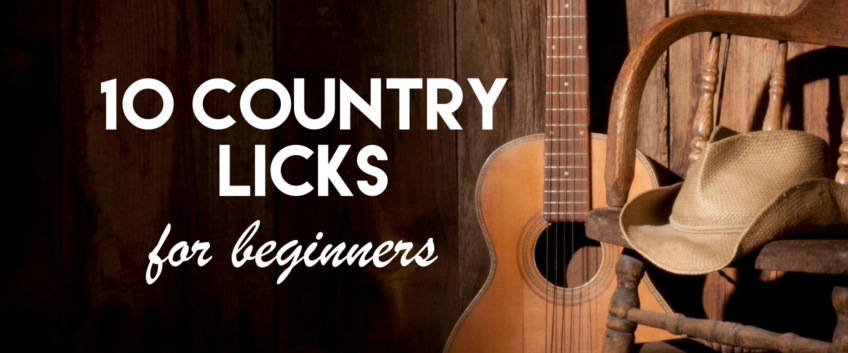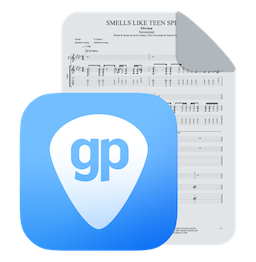
10 Country Guitar Licks For Beginners by Jim Lill (free tab)
If you always wanted to start playing Country Guitar, discover Jim Lill licks for beginners.
This musician from Nashville is currently touring with Josh Thompson and has contributed content to Guitar Player Magazine and Guitar Aficionado Magazine. Every Monday, he is publishing a new guitar lesson on his YouTube channel. Let’s dive in to this great lesson. Enjoy!
 “10_Country_licks.gpx”
“10_Country_licks.gpx”
(click on the image to download the Guitar Pro tab)
About the licks
Thanks for checking out my country guitar lesson!
Here in Nashville, TN, there are amazing musicians everywhere. You can get top notch gospel at a small church, brain-bending jazz fusion at Acme Feed and Seed on lower broadway, ethereal indie-pop at the Mercy Lounge, and the diversity never ends. Nashville will forever be tied at the hip to one style of music, though: Country Music.
I moved to Nashville in 2011 because I wanted to play country music. I came here with a Telecaster and some Brad Paisley licks under my fingers, and since then that Telecaster has accompanied me through countless country songs on countless country stages and studios. While my love for country music was strong when I got here, my knowledge of country music has grown tremendously.
So I thought I’d do a favor for all of the guitarists out there that don’t love country music as much as I do, but do enjoy the sound of a bridge pickup getting chicken picked. I have condensed the style of country guitar into 10 licks that will guide anybody unfamiliar with the style through the muscle memory and theory behind the art form of twangin’ a Tele.
Lick #1: “2-3-5-3-2-1 Slides”
One of the basic tropes encountered in country guitar playing is the “slide”. This is when you pick a note, keep your finger down, and slide up or down the fretboard to a new note. This gets you double points because it sounds cool and it makes going from position to position easier. This lick takes the same shape and moves it over different major chords in the key of “A”, which helps you get used to another country guitar trope: playing over the chord.
Playing over the chord is the idea that you don’t just solo in the same minor pentatonic box forever. Instead you acknowledge the chord progression by shifting to a different set of notes each time the chord changes. This is necessary in complex jazz and western swing music, and it comes in handy in country and rock music as well.
Note: The video explains the theory behind why this lick is called the “2-3-5-3-2-1 Slides”.
Lick #2: “2-3-5-3-2-1 Bends”
To keep you getting used to playing over chords, lets keep the note choice the same as lick #1 but introduce a new concept for getting to the notes. “Bending” is when you take a string and pull it toward the ceiling or floor to raise the pitch, and it is more integral to the sound of country music than any other individual technique. You can also do a “pre-bend release,” which is when you pick the note with the string already bent and then release it back to the original pitch. This lick does both, and unveils the real sweet spots of the fretboard for bending in a major key.
Lick #3: “High Sixths”
Sixths are when you pluck two notes at once that are six scale degrees apart. Moving up and down harmonized scales using sixths has been a part of country guitar for a century, and has permeated into many other styles of guitar as well. To play sixths you have to pick the lower note with your pick and pluck the higher note with your middle finger on your right hand. This is called “hybrid picking” or “chicken pickin”, and this is the right hand technique that country music is known for pioneering. This lick also uses chromaticism, which means playing notes that are a half step apart as passing tones even if they aren’t in the scale.
Lick #4: “Low Sixths”
Sixths can be done on the high E and G strings or the B and D strings, but you can also do sixths on the G and A strings or the D and low E strings. “High sixths” and “Low sixths” have different fingerings and it’s good to learn both. Since Lick #3 dealt with high sixths, we’re going to do the same thing in lick #4 with low sixths.
Lick #5: “E/B Thirds”
Sixths are two notes six scale degrees apart played together, so thirds are two notes three scale degrees apart played together. Thirds can also be referred to as “doublestops” because it’s two notes on adjacent strings placed together. Doublestops are key in getting a real country sound. Note: all thirds are doublestops, not all doublestops are thirds. Then when you add in chormaticism and some muted percussive notes, you’ve got twangy gold. This lick shows how to play thirds on the high E and B strings, but the form also transfers to the G/D strings, D/A strings, and A/E strings.
Lick #6: “B/G Thirds”
Because of the weird tuning a guitar has, the form for thirds looks different on the G and B strings than any other set of strings, so we have to make sure we have the G/B form under our fingers, too. This form allows for us to play some of the thirds with one finger as a barre, which opens up a bunch of cool possibilities for playing faster, too.
Lick #7: “Triplet Pulloff Speed Lick in A”
Country guitarists are also known for being fast. The inherent lack of sustain in a Telecaster being fed through a clean amp means you have to hop from note to note like you’re running through quicksand. You can’t just BB King a note and shake it for a week, you’ve gotta GO PLACES. Fast playing can seem intimidating to those uninitiated to the ways of country, but the guitar greats before us have figured out ways to cheat and get speed without doing much work.
The #1 way to get speed without having to do a ton of work is pulloff triplets. Play three notes per string, pick the first one, pull off to the send one, pull off to open. Then do it again and again down the strings. At the end of your journey land on the right chord and you’re good to go. Just make sure the notes you’re playing (mostly) match the key and feel of the song and you can let muscle memory do the rest.
For the example in A, I recommend focusing on the 4th and 2nd frets of the G and D strings. It gives you a cool dorian feel.
Lick #8: “Triplet Pulloff Speed Lick in G”
All of the same principals apply as before, but instead of a dorian feel like we had in the key of A, the key of G lends itself to straight up major when doing triplet pulloffs. Actually, G is such a friendly guitar key, you can do pretty much anything you want with it, but this example is 100% diatonic major.
Lick #9: “Triplet Pulloff Speed Lick in D”
The key of D is easier to find notes for but harder to land on because you have to go up to the open D string after completing your 4-2-0 4-2-0 4-2-0 gauntlet. Pro Tip: if you go into Drop D you can continue the 4-2-0 journey all the way down to the lowest string.
Lick #10: “Triplet Pulloff Speed Lick in E”And our lesson ends in the key of E, where we do a dorian run of notes that is common to rock and country. Remember when you’re practicing these to turn your distortion down and practice slow to a metronome. You don’t want to develop sloppy, weak pulloffs. Make sure the notes you’re pulling off to are as strong as the ones you pick, and keep everything tight in time.
So no matter where you live, if you learn these 10 licks you can get a little piece of Nashville resonating out of the body of your guitar and coming out of the speaker in your amp. So pull out the metronome and get twangy.
Happy practicing!
– Jim
Follow Jim on…
Leave a comment
Your email address will not be published.
| Title | Artist | |
|---|---|---|
Donna

|
Ritchie Valens | |
The Thrill Is Gone

|
B.B. King | |
Poison

|
Alice Cooper | |
Hotel California

|
The Eagles | |
| The Air That I Breathe | The Hollies |



9 Comments
Brilliant easy to follow
Thank you very much Peter!
Marvelous,
So great music with such simple and easy hand movements.
Thanks, Jim.
Excellent
Thanks
So COOOOOOOL
Thanks a lot
Were is your website
Nice, it’s really a big help… thanks
Hi Jim, I loved your video lesson(s). Just great, and very well composed, clear and easy to follow. What is your website as I would like to hear more from you.
Cheers,
Paul.
New Zealand
Why do I bother canlilg up people when I can just read this!